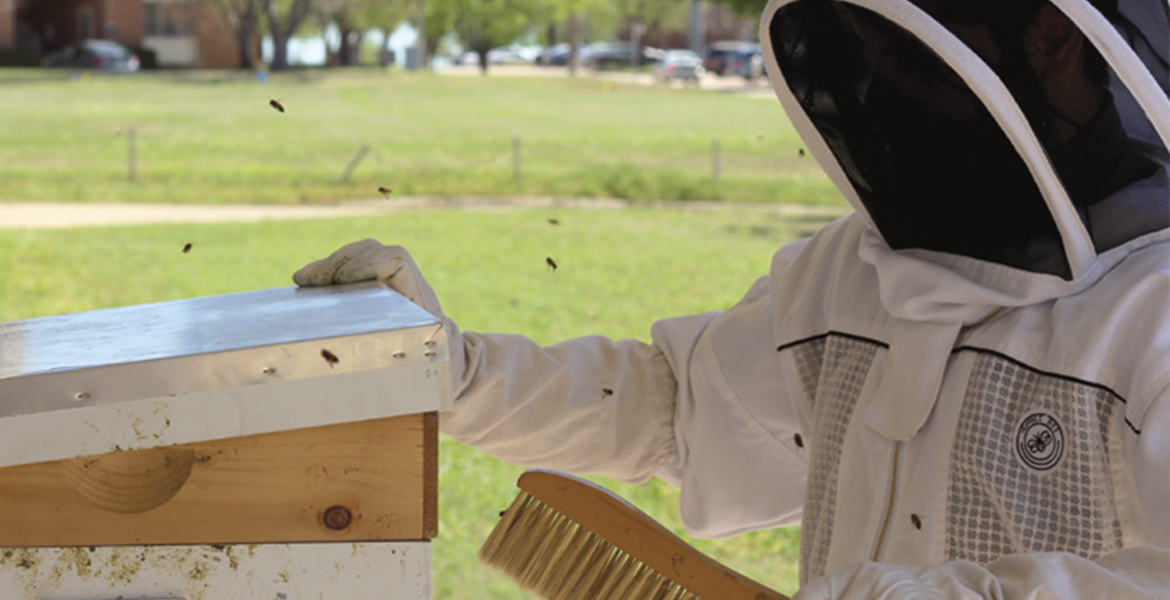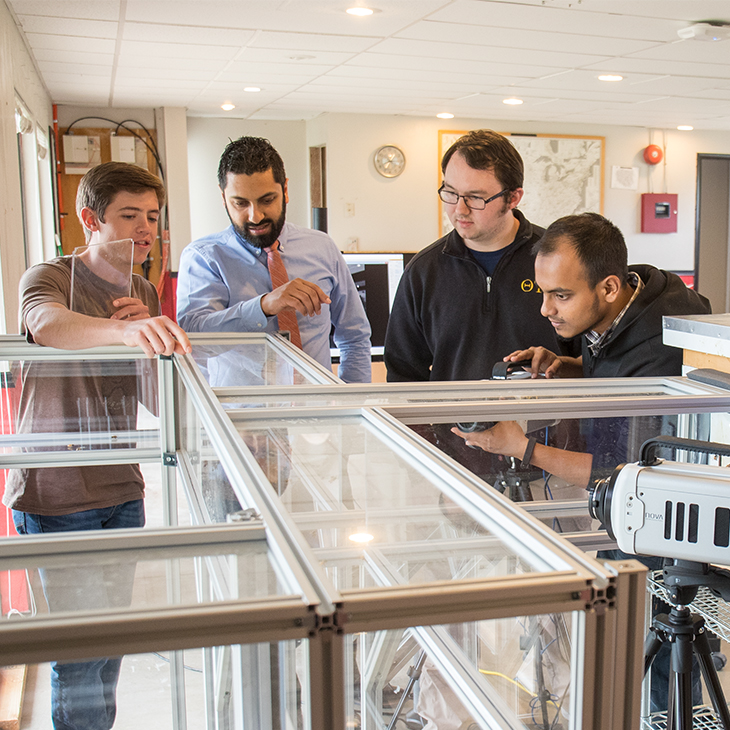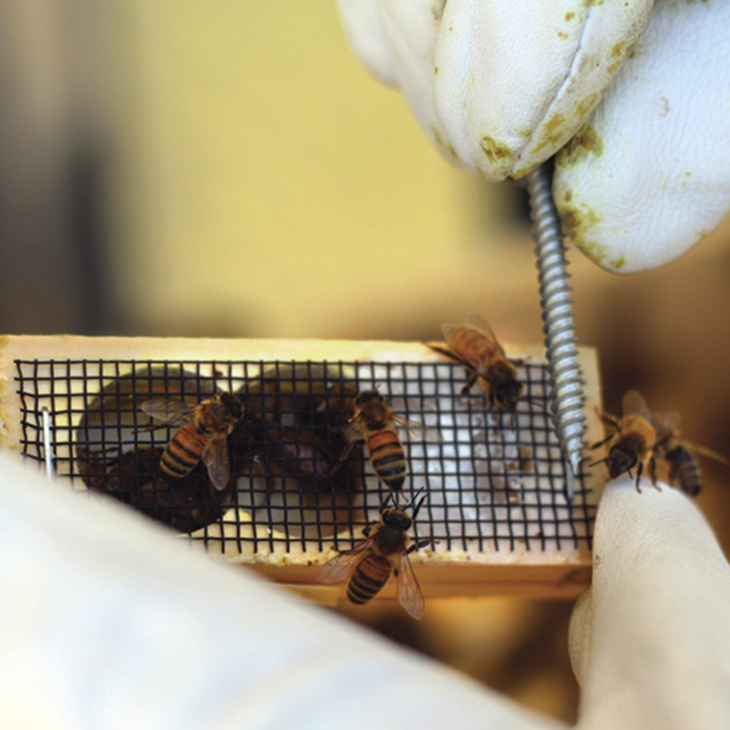
Lessons From Bees
Thursday, September 19, 2019
OSU researchers are seeking hints on swarming behaviors from insects
Imagine seeing swarms of drones quickly fly over the path of a miles-long tornado looking at heat signatures for signs of life. Or unmanned, aerial vehicles autonomously lining up to enter a home window while searching for victims.
An Oklahoma State University researcher is in the early stages of studying groups of honey bees in hopes of determining if their flight paths could be useful in a wide variety of industries, including helping future swarms of autonomous drones better work as cohesive units.
Dr. Imraan Faruque, mechanical and aerospace engineering assistant professor and director of the autonomous physics group at OSU, is thrilled to be doing the research with help from a few students and a postdoctoral researcher.

“We will be collecting experimental flight data in crowded assemblies, both body trajectories and wing motions, which will provide a powerful validation tool to test our theoretical models against,” Faruque said.
The Office of Naval Research selected Faruque as one of 25 earlycareer professionals for its 2019 Young Investigator Program. The award comes with up to $750,000 in funding over three years.
Faruque’s project, titled Insect Group/Swarm Behaviors and their Relation to Individual
Feedback Models, will contribute to the Office of
Naval Research’s Science of Autonomy program.
“In this project, we will extend my theoretical and experimental neural function extraction
work from individuals to groups and swarms of insects. This will allow us to address
some challenges in practical aerial swarms by studying how insects use their limited
neural resources to achieve robust, autonomous, group and swarm behaviors,” he said.
“Many insects don’t see the world like you and
I do. They sort of see this blurry, out-offocus version. What they are actually responsive
to is motion patterns.”
Sophomore Ethan Lane is fascinated with bees and had his own hives as a youth in Lawton, Oklahoma.
“Almost every insect has something unique about it that we can use and leverage to improve our technology,” Lane said. “It is already there; we just have to go and study it.”

During the spring semester, Lane built a tunnel that bees could fly through so they could be studied and recorded.
“The first task was to figure out what size the tunnel needed to be,” Lane said. “If
a bee is feeling too confined, it will walk. If the tunnel is too big, the bee won’t
be in a controlled trajectory. We settled on an 8-inch by 8-inch ‘Y’ maze that allows
the bee to leave the hive and
then split left or right.”
The goal is to study the detailed mechanics of in-flight interactions as insects navigate
spatial decision making tasks. For example, deciding which tunnel to exit based on
learned positive or negative responses to color and other visual stimulus and how
those
interactions change as more members are introduced.
“Anything that we want to model on the bee and study about its flight, we won’t have to wait for these things to happen — we can tell the bee to turn left, and we can get video of that turn,” Lane said.
The lab is equipped with nearinfrared lighting and four video cameras capable of recording at least 9,000 frames per second in 1080 highdefinition quality.

Doctorate student Arif Billah, from Bangladesh, is focused on analyzing the footage and drawing conclusions.
“We are trying to learn how bees communicate between each other and how they make decisions,” Billah said. “Once we know more about them, we can apply our own form of robotic bees to control how they behave.”
That’s right: OSU is working on a prototype for a fake bee.
“Part of my job as an adviser is to figure out what students are curious about and
figure out a way to make that society-relevant in a way that solves some of today’s
big challenges,” Faruque said. “I want people who are passionate working on a particular
problem. This
is a process where you need that selfdiscovery and that motivation. You sort of need
to have your own curiosity.”
